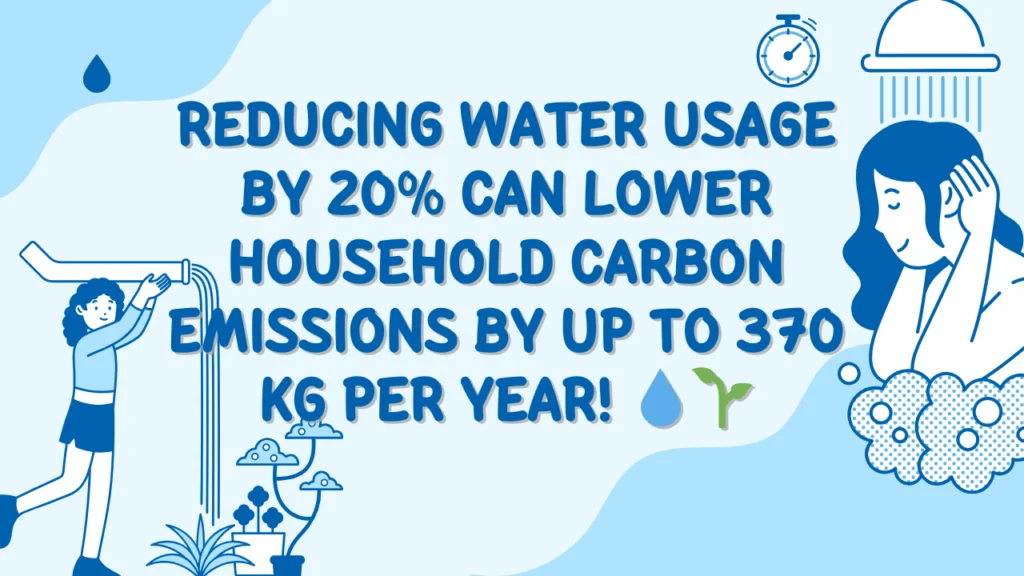How to Reduce Carbon Footprint at Home
Introduction
With the rise of climate change and the shift to working from home, reducing our carbon footprint has become more crucial than ever. By making small, manageable adjustments to our daily habits, we can lessen our environmental impact, conserve resources, and even save money. Here, we’ll explore ten effective strategies to help lower your home’s carbon emissions, making a difference for both the planet and your wallet.

Optimize Home Energy Use
Choose Energy-Efficient Appliances
Switching to energy-efficient appliances can make a big impact. Look for the Energy Star label or equivalent certifications that confirm a product meets efficiency standards. For example, ENERGY STAR-rated appliances use up to 50% less energy, reducing both your carbon footprint and energy bills.
Install Smart Thermostats and Lighting
Smart thermostats can help regulate temperature automatically, making your heating and cooling systems more efficient. Setting your thermostat just one degree lower can reduce energy usage by up to 3,090 kWh per year. Similarly, switching to LED bulbs in your home can lower energy consumption by up to 75%.
Reduce Water Usage at Home

Invest in Low-Flow Fixtures
Low-flow faucets, showerheads, and toilets help save water without sacrificing functionality. With these fixtures, you could reduce household water use by up to 50%, which in turn reduces the energy required to heat and pump water, cutting down on your carbon footprint.
Practice Conscious Water Usage
Small changes, like turning off the tap while brushing your teeth, can add up to significant water savings. Running dishwashers and washing machines with full loads and using cold water also reduce energy use and contribute to a lower carbon footprint.
Improve Home Insulation
Seal Doors and Windows
Proper insulation is essential for an energy-efficient home. Adding foam, brush, or wiper strips around windows and doors can cut energy loss and save around $20 a year. Not only will this reduce heating and cooling costs, but it will also make your home more comfortable throughout the year.
Install High-Quality Insulation
For those with larger budgets, consider insulating walls, ceilings, and floors to keep heat in during winter and cool air in during summer. Although it involves an initial investment, high-quality insulation can pay off by saving energy costs over time.
Switch to Renewable Energy Sources
Install Solar Panels
Solar panels are an excellent long-term investment for reducing your home’s carbon emissions. While the upfront cost may be high, solar energy can lower or eliminate your electricity bills, and in many places, you may be eligible for tax credits or rebates.
Use Renewable-Based Heating Options
Consider replacing traditional heating systems with renewable options, like geothermal heat pumps or solar water heaters. These systems use significantly less energy and help lower your overall carbon footprint.
Practice Conscious Food Choices
Choose Local and Organic Foods
Choosing locally-sourced and organic produce reduces the carbon emissions associated with food transportation. In the U.S., food production and transportation account for 13% of all greenhouse gas emissions. Supporting local farmers also strengthens your community’s economy.
Reduce Food Waste
Planning meals, freezing leftovers, and composting organic waste can significantly reduce your food-related carbon footprint. Food waste contributes to 8% of total global emissions due to the methane gas released by decaying waste in landfills.
Adopt Sustainable Transportation Habits
Walk, Bike, or Use Public Transit
When possible, replace car trips with walking or biking. Public transportation is also a more eco-friendly option. Driving less can significantly reduce your carbon footprint, particularly if you use public transportation or switch to carpooling.
Consider an Electric or Hybrid Vehicle
If you need a car, an electric or hybrid vehicle is an environmentally friendly choice. Electric cars emit about 50% less carbon dioxide than gasoline-powered cars over their lifetime, including the emissions produced during manufacturing.
Reduce and Recycle
Limit Single-Use Products
Reducing single-use products like plastic bags, cups, and utensils decreases waste and conserves resources. Switch to reusable options for a more sustainable lifestyle and avoid products with excessive packaging when shopping.
Commit to Recycling
Proper recycling practices ensure that valuable materials are reused, lowering the demand for new resources. Many products, including aluminum, glass, and some plastics, can be recycled indefinitely, reducing their environmental impact.
Monitor and Manage Energy Usage
Unplug Idle Electronics
Devices left plugged in, even when not in use, draw “phantom power,” which adds to your energy bill and carbon footprint. Smart power strips automatically cut power to devices in standby mode, helping to prevent this unnecessary energy use.
Track Home Energy Consumption
Consider using an energy monitor to see how much energy each device in your home consumes. By identifying the most power-hungry appliances, you can make adjustments to reduce overall consumption and increase efficiency.
Support and Educate About Sustainability
Promote Sustainability with Friends and Family
Encouraging sustainable habits among friends, family, and coworkers can magnify your impact on reducing carbon emissions. Hosting virtual meetings and eco-friendly events can be a way to share knowledge and motivate others to adopt greener practices.
Join Local Environmental Initiatives
Getting involved in community sustainability projects, such as clean-ups, tree-planting, or educational workshops, can make a tangible impact. These activities not only help the environment but also build community and raise awareness about reducing carbon footprints.
FAQ
What are the best ways to reduce carbon footprint at home?
Optimizing energy use, using renewable energy sources, reducing water waste, and choosing energy-efficient appliances are all effective ways to cut down on carbon emissions at home.
How does food impact my carbon footprint?
Food production and transportation generate a significant amount of emissions, so choosing local, plant-based options and reducing waste can greatly lower your food-related carbon footprint.
Are smart thermostats really effective?
Yes! Smart thermostats allow you to program temperature settings, which can significantly cut down energy use, particularly during hours when you are away or asleep.
Does reducing my water usage help lower my carbon footprint?
Absolutely. Reducing water waste also conserves the energy needed to treat, pump, and heat water, lowering overall greenhouse gas emissions.
What are the benefits of switching to renewable energy at home?
Using renewable energy, like solar power, significantly reduces your home’s carbon emissions and can save you money on utility bills in the long run.



